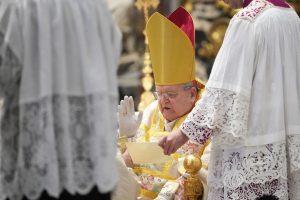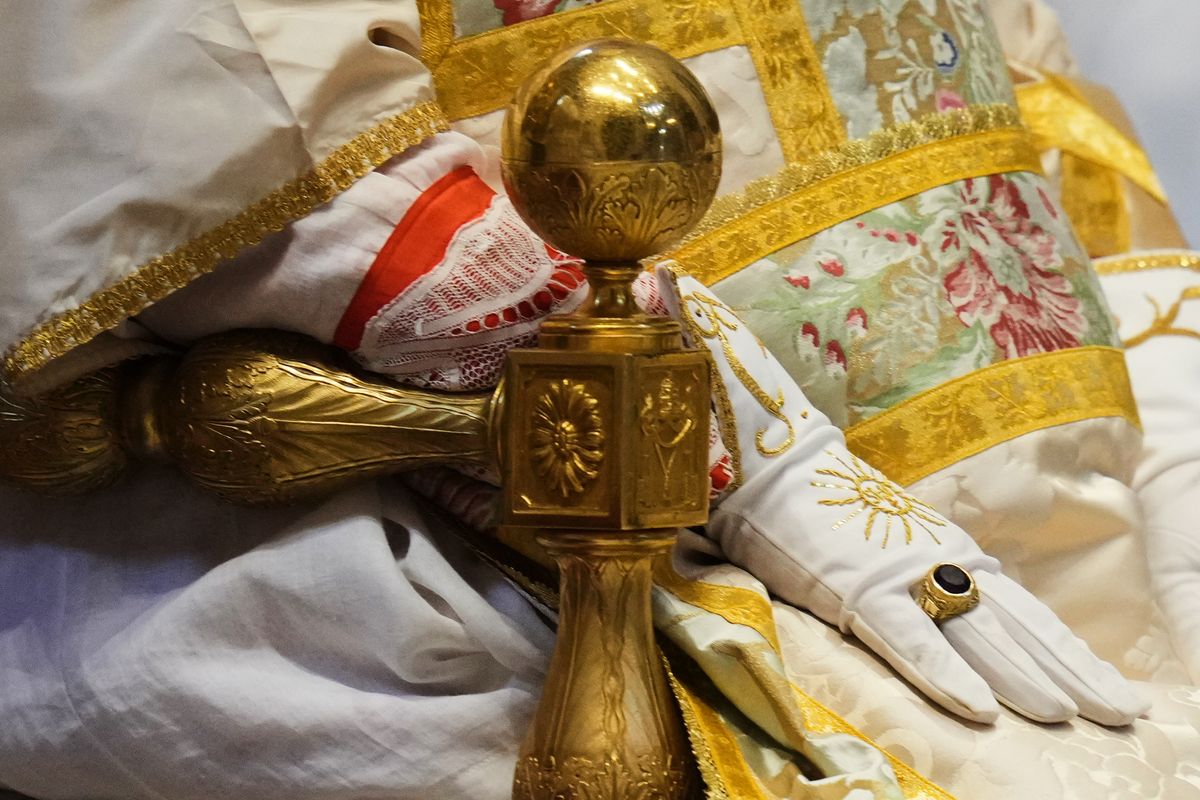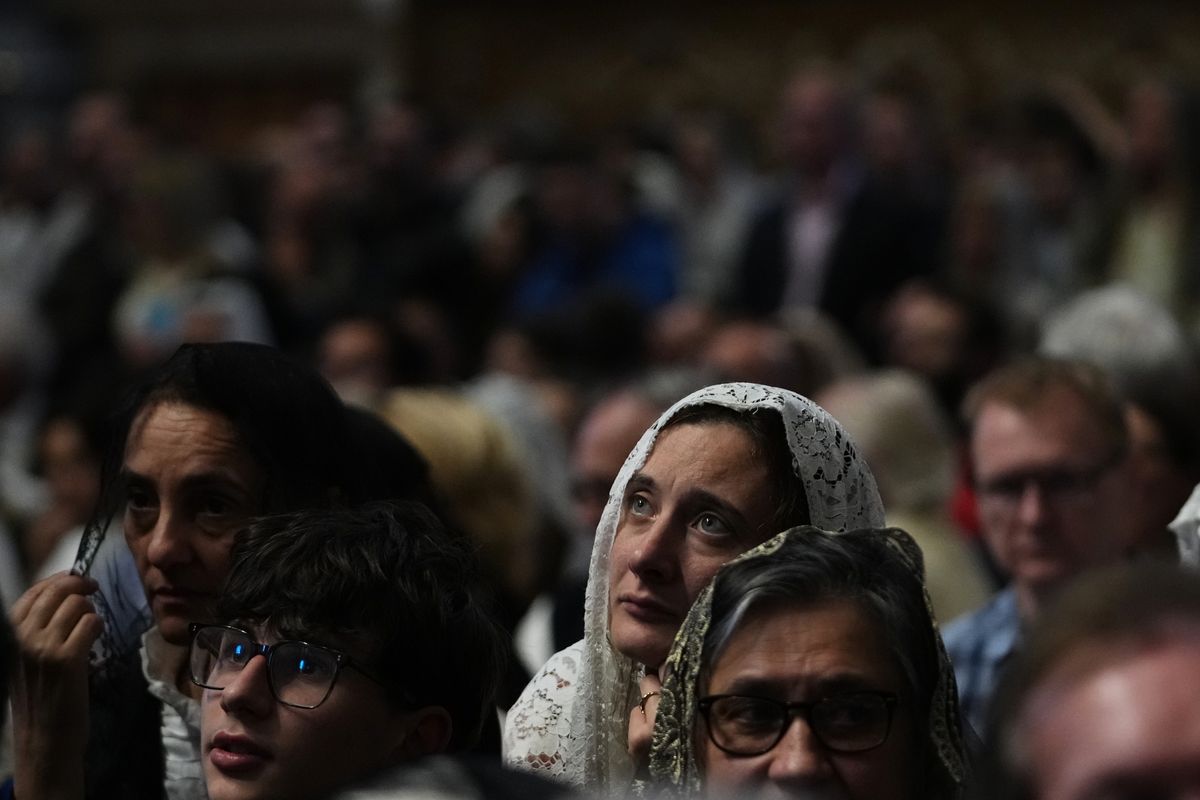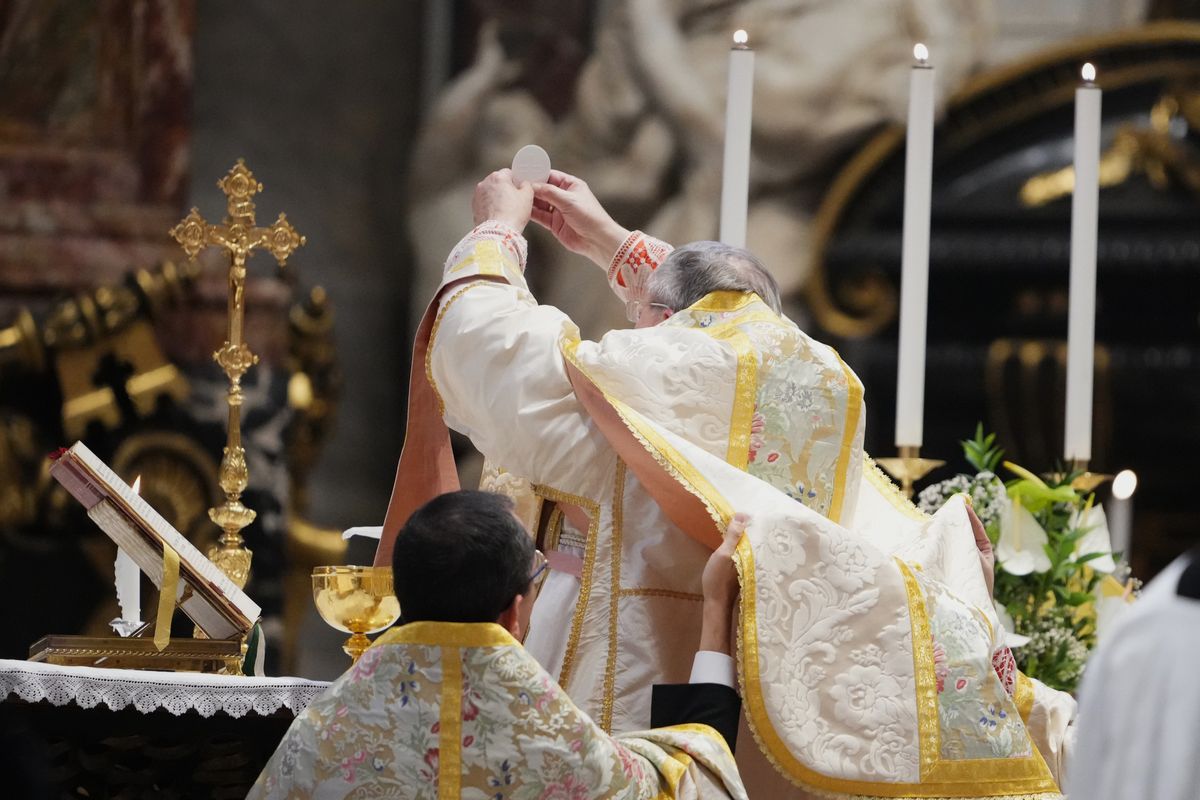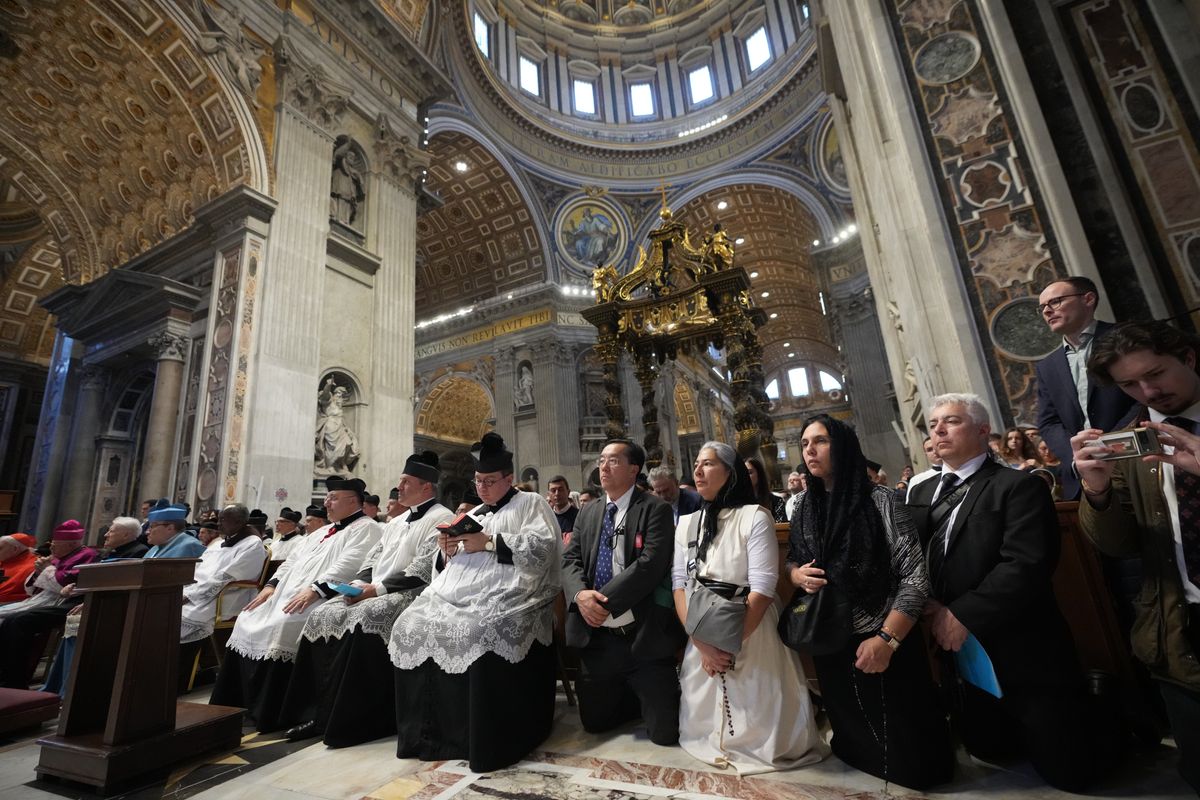VATICAN CITY (AP) — A top American cardinal celebrated a traditional Latin Mass on Saturday in St. Peter’s Basilica with the explicit permission of Pope Leo XIV, thrilling traditionalist Catholics who had felt abandoned after Pope Francis greatly restricted the ancient liturgy.
A few thousand pilgrims, many of them young families with multiple children and the women covering their heads with lace veils, packed the altar area of the basilica to standing room-only capacity.
Cardinal Raymond Burke, the conservative American figurehead, presided over the 2 1/2-hour liturgy, which was rich in hymn, incense and priests bowing to the altar, their backs to the faithful in the pews.
For many traditionalists, the moment was a tangible sign that Leo might be more sympathetic to their plight, after they felt rejected by Francis and his 2021 crackdown on the old liturgy.
Francis had taken action after the spread of the ancient liturgy, especially in the United States, dovetailed with the rise of religiously inspired political conservatism and decline in church attendance at more progressive parishes.
“I’m very hopeful,” said Rubén Peretó Rivas, an Argentine organizer of the pilgrimage. “The first signs of Pope Leo are those of dialogue and listening, truly listening to everyone.”
Liturgy wars a long time brewing
The latest rounds in the liturgy wars date back to the Second Vatican Council, the 1960s meetings that modernized the church. Among the reforms was the celebration of the Mass in the vernacular, rather than Latin.
In the decades that followed, the old Latin Mass was still available but not widespread. In 2007, Pope Benedict XVI relaxed restrictions on celebrating it as part of his overall outreach to traditionalists still attached to the old rite.
In one of the most controversial acts of his pontificate, Francis in 2021 reversed Benedict’s 2007 reform and reinstated restrictions on celebrating the old Mass. Francis said its spread had become a source of division in the church and been exploited by Catholics opposed to Vatican II.
Rather than heal the divisions, though, Francis’ crackdown seemed to further drive a wedge.
“We are orphans,” said Christian Marquant, a French organizer of Saturday’s pilgrimage.
Leo’s election and vows to bring peace and healing
Leo, history’s first American pope, was elected with a broad consensus among cardinals and has said his aim is unity and reconciliation in the church. Many conservatives and traditionalists urged him to heal the liturgical divisions that spread over the Latin Mass, especially.
After Leo’s election, Marquant wrote Leo a letter on behalf of some 70 traditionalist groups asking, among other things, for permission to celebrate a Mass according to the ancient rite in St. Peter’s during the traditionalists’ annual pilgrimage to Rome.
Burke, who had an audience with Leo on Aug. 22, gave him the letter and Leo gave his permission, Marquant said.
Francis, too, had allowed Latin Masses to be celebrated in the basilica even in the immediate aftermath of his 2021 crackdown, but only by low-ranking priests. In 2023 and 2024, the traditionalists couldn’t find anyone even willing to approach Francis to ask permission, Marquant said.
On Saturday, Burke didn’t mention Francis, his crackdown or Leo in his homily, the key section of which he delivered in Italian, Spanish, French and English. But he referred repeatedly to Benedict and his 2007 reform liberalizing the old liturgy as if it were still very much in force.
Through Benedict’s reform, “the whole church is maturing in an ever deeper understanding and love for the great gift of the sacred liturgy, as it has been handed down to us in an unbroken line from the Apostolic Tradition, from the Apostles and their successors,” Burke said.
The Hungarian ambassador to the Holy See, Eduard Habsburg, stood for over an hour with his family among the pilgrims to cross through the basilica’s Holy Door, and then found spots in the standing-room-only section for the Mass.
“It’s really nothing like the cliches you hear of traditionalists,” he said as he inched his way into the basilica. “The reality is families with children.”
In July, leaked Vatican documents undermined Francis’ stated reason for having imposed the restrictions in the first place: Francis had said he was responding to “the wishes expressed” by bishops around the world who had responded to a 2020 Vatican survey, as well as the Vatican doctrine office’s own opinion.
But the documents suggested that the majority of Catholic bishops who responded to the survey had expressed general satisfaction with the old Latin Mass and warned that restricting it would “do more harm than good.”
Tradition-minded Catholics in the pews hopeful
James Rodio, a psychiatrist and father of three, has been attending the traditional Latin Mass with his family for nearly three decades in Cleveland, Ohio.
“I was just struck by the reverence and beauty and symbolism in action and gesture, and of course the content too,” he said in a telephone interview.
Even though Rodio had always had access to a traditional Mass in Cleveland, he and other parishioners felt “frustration” at Francis’ crackdown and the restrictions that he imposed.
“Behind it all, there was a sadness” and sense that Francis didn’t understand them, he said. “How could any organization have an approach for 16 or 17 centuries and then say it wasn’t valid anymore?”
Rodio said he and his fellow parishioners are optimistic about Leo and hope he will allow more parishes to offer the traditional liturgy. In recent weeks, the diocese of Cleveland received a two-year extension to keep allowing the Latin Mass at two diocesan churches.
“My guess is Leo may try to do a lot by not doing a lot publicly,” Rodio said.
__
Associated Press religion coverage receives support through the AP’s collaboration with The Conversation US, with funding from Lilly Endowment Inc. The AP is solely responsible for this content.
By NICOLE WINFIELD
Associated Press

